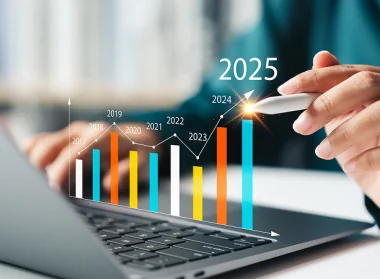Balancing cost savings and risk exposure against quality, performance, and efficiency is all in a day’s work for the average procurement professional.
But in the quest to achieve maximum value for minimum risk, it’s critically important to factor the total cost of ownership (TCO)—i.e., the purchase price of goods combined with the operating costs it carries—into your calculations.
TCO is at the heart of strategic procurement, and achieving optimal return on investment (ROI) for everything from pencils to plutonium is difficult, if not impossible, without taking it into consideration.
Fortunately, with the right processes and tools, it’s easier than you might think to make TCO an integral part of your procurement.
Why Total Cost of Ownership Matters
Taking the long view, TCO shifts the focus of effective procurement from cost to value. Like consumers, companies seek to gain an optimal return on the investments they make in goods and projects.
TCO provides insight into not just immediate savings from lower pricing, but long-term indirect costs that may turn today’s bargain into tomorrow’s money pit.
In addition to initial purchase price, TCO calculations can include, but aren’t limited to:
- Operation and Labor Costs
- Financing Costs
- Warranty Costs
- Inspection Costs
- Training and Education Costs
- Risk Management Costs
- Storage Costs
- Fuel Costs
- Safety Costs
- Environmental Impact Costs
- Maintenance Costs (including updates, repair costs, and lost work hours)
- Customer Education Costs
- Scrap and Replacement Costs
Creating a common framework for evaluating every purchase and moving away from price-only procurement toward total ownership cost helps improve decision making and strategic sourcing. Total cost of ownership models provide a more nuanced, and complete, financial view of the actual costs for the goods you procure before you buy.
As with many other aspects of procurement, calculating total cost of ownership will vary based on the size, goals, priorities, and industry of a given business. However, certain common principles and considerations are the same regardless of how you’re measuring TCO.
Running TCO Calculations
As with many other aspects of procurement, calculating total cost of ownership will vary based on the size, goals, priorities, and industry of a given business.
However, certain common principles and considerations are the same regardless of how you’re measuring TCO.
When evaluating a potential capital investment, it’s often useful to group potential costs into distinct groups and then further refine each category once you’ve established the major expense categories.
Say you create a model using three broad categories: One-Time Costs, Ongoing Costs, and Opportunity Costs.
One-Time Costs
The initial purchase price, plus any taxes, fees, and associated purchases will fall into this category. So if you’re buying a group of PCs for your office workers, for example, this category would include:
- Hardware
- Accessories and peripherals
- Installation costs
- Taxes
- Any software with a one-time-only license fee
Ongoing Costs
In this category, you’ll list recurring expenses. They could be monthly, quarterly, or annual costs, depending on their purpose.
To continue with the example of PC purchases for your office, this category would include:
- Software that requires periodic license renewals
- Maintenance costs, including:
- Information Technology (IT) support costs
- Hardware and software upgrades (as distinct from license renewals)
- Repair costs
- Lost productivity costs from unexpected downtime
- Insurance premiums
- Data storage, backup, and disaster recovery costs
- Training, education, and refresher costs
Opportunity Costs
This category is a little different from the other two, as it requires you to consider what the benefits you’ll sacrifice by making a given decision; it’s all about trade-offs.
So if, for example, you decided to lease, rather than buy, the PCs in our example, you’d likely gain some cash flow with a reduced initial investment and save money on both depreciation and internal maintenance.
On the other hand, you might end up with a higher total cost over (for example) a five-year period once you factor in software licensing, financing costs, and additional costs arising from limitations imposed by leasing rather than owning (e.g., not being able to move the PCs to another facility due to restrictions from the lessor, and consequently having to buy or lease additional assets).
Taken together, these three groups give you a well-rounded understanding of your options for any given purchase, and allow you to use value, rather than initial purchase price, to inform your decision-making.
Be on the Lookout for Hidden Costs
Regardless of your industry, it’s important to remember that indirect costs are also quite often hidden costs.
Breaking your expenses down into ever-finer categories helps flush out most of the more insidious offenders, but it pays to be proactive.
For example, you know the new car the company is buying or leasing for a traveling sales professional will need regular fueling and servicing, but might not have considered the need for additional winter-weather upgrades (chains, salt-proofing, more frequent cleanings to combat corrosion) in the territory they’re working.
The difference in TCO these upgrades create might just swing the balance in your choice of financing, manufacturer, or vehicle model.
Technology Simplifies TCO Analysis
Once you’ve identified and begun to refine your cost categories, you’ll soon discover that tracking all these expenses, particularly in more complex comparative matrices, is a hard row to hoe with outdated tools and a stack of paper.
One of the most effective and efficient ways to overcome this potential hurdle is the incorporation of a comprehensive, cloud-based procurement solution.
Automation, powered by artificial intelligence and enhanced by continuous machine learning, transforms your procurement and aids in TCO analysis in several critical ways:
- Centralized, cloud-based data storage and management make it easy to collect, organize, and analyze data. Long-term cost projections can be easily integrated with one another and used to create comprehensive TCO data for any given item, category, or project.
- Users have instant, role-appropriate access to the information they need from their desktop or mobile device.
- All purchases are routed through the centralized computer system, eliminating rogue spend and preserving data integrity to ensure you’re getting an accurate picture of both immediate and long-term costs.
- Stakeholders from multiple areas, including marketing, finance, sales, production, and procurement, can review existing purchase data to provide a comparison for future purchases. This creates both more cost-effective spend, as well as opportunities to negotiate for more favorable pricing and terms with vendors as needs evolve.
Price is Just the Beginning
Making the shift to value-driven procurement starts with understanding total cost of ownership—and putting that understanding to good use when planning your purchases.
When you take the time to establish detailed categories for your expenses, and incorporate tech tools like automation and artificial intelligence, you can make decisions with confidence and get the best possible return on every dollar spent.




